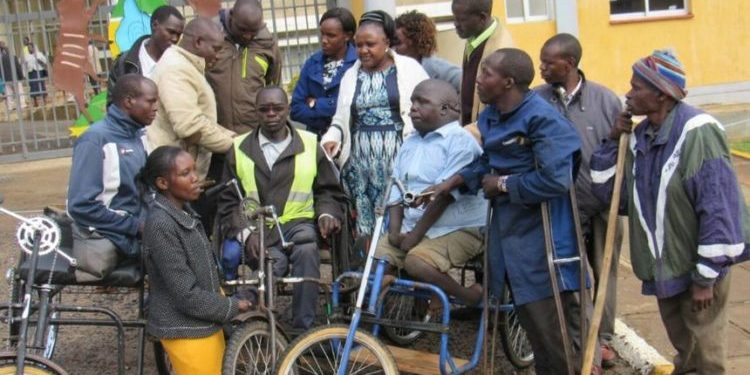In Nigeria, the media plays a crucial role in shaping public perception of disability, influencing societal attitudes and policy decisions. However, the portrayal of disability in the media is a double-edged sword, with both positive and negative impacts that need careful analysis and understanding.
Historically, the media has reinforced stereotypes to portray people with disabilities. These stereotypes, whether negative or positive, are rarely accurate. While more realistic portrayals are becoming more common, stereotypes remain prevalent.
According to GLAAD, only 3.1% of actors on TV have a disability, even though people with disabilities should be represented in all forms of media. Globally, there are approximately 1 billion people with disabilities, making up 15 percent of the population (https://www.worldbank.org/en/topic/disability). Evidence suggests that people with disabilities are disproportionately represented among the world’s poor.(https://www.un.org/development/desa/disabilities/resources/disability-and-the-media.html)
Blessing Oladunjoye, publisher of BONews Service, an online news platform that focuses on disability reporting, highlighted the knowledge gap among media professionals which has limited their capacity to provide adequate coverage of disability issues.
Oladunjoye thereafter stressed the importance of continuous training and self-awareness to promote a nuanced understanding of issues relating to PWDs. “I have come to a stage where, over time, based on my level of expertise and knowledge in reporting disability issues, I have been able to understand the right model and approach,” she explained.
Mariya Shuaibu Suleiman, a Multimedia Journalist at BUK TV & Radio in Kano, emphasizes the importance of highlighting individuality and diverse experiences. “When reporting on disability issues, I focus on highlighting the individuality and diverse experiences of people with disabilities. I avoid clichéd narratives and instead present stories that show the complexities and richness of their lives,” she said.
By consulting directly with individuals and advocacy groups, she ensures her language and perspectives are respectful and accurate.
Despite progress, negative portrayals persist. Sensationalist reporting and language that evokes pity or stereotypes PWDs as “victims” or “superhumans” can reinforce harmful stereotypes. These portrayals overshadow systemic issues and focus narrowly on personal struggles or extraordinary achievements. The United Nations notes that “images and stories in the media can deeply influence public opinion and establish societal norms.”
Common stereotypes include the villain, superhero, and victim. These terms reflect debates over “person first” language and “identity first” language, respectively. One primary challenge is the communication barrier, particularly when interviewing Deaf or persons with Deafblindness.
Oladunjoye recounted an instance where an interpreter, meant to facilitate communication, inadvertently led the conversation. “Often, the communication barrier with the Deaf person is significant. I might be asking different questions, and the interpreter, in the process of breaking it down, might pass the wrong message entirely,” she noted. In such cases, she compels journalists to follow-up with the subject.
For instance, she shared an example involving a deaf woman and her child, which highlighted the emotional and communicative complexities involved. “The woman was passing a message to her son through sign language, but he could not convey it to me due to the emotional weight of the situation. Later, I managed to get the message by asking her to type it instead,” Oladunjoye explained.
Language and framing in disability reporting have profound impacts. Journalists and editors face several challenges in disability reporting, including limited access to training on inclusive language, pressures of sensationalism for higher viewership, and a lack of resources for comprehensive coverage. Interviews with media professionals reveal a need for ongoing education and support.
Suleiman recounted a story about a young entrepreneur with a disability who developed an innovative product to help others with similar challenges. “The story resonated widely because it showcased the entrepreneur’s ingenuity and determination,” she said.
Oladunjoye narrated an incident where an editor suggested using the term “deaf and dumb.” She had to correct the editor, emphasizing the importance of accurate terminology. “Editors need to understand the nitty-gritty of these issues. If the editors are not aware of the right terminologies or approach, they won’t be able to support journalists better,” she stressed.
Oladunjoye emphasized that the voices of PWDs should be authentically represented, requiring an understanding of their preferences and contexts. This involvement ensures that the stories are accurate and respectful.
Oladunjoye and Suleiman agree on the role of media watchdog organizations in promoting accurate and respectful reporting on disability issues. They believe these organizations should support journalists by providing training and resources. “Journalists should be well-trained, and editors should be well-trained to ensure that issues with PWDs are reported accurately and appropriately,” Oladunjoye asserted.
LightRay media policy and child rights advocate Lady Ejiro Umukoro concurs, emphasizing the need for inclusive, balanced, and fair representation of people with disabilities. “We should ensure their voices are heard and their issues are understood,” she said.
Umukoro highlighted that the media can play a significant role as a watchdog in protecting the rights of people with disabilities, ensuring they are treated with dignity and respect as enshrined in the Nigerian constitution.
This piece is published in fulfillment as Disability and Inclusion reporting fellowship of Africa Foundation For Young Media Professionals

